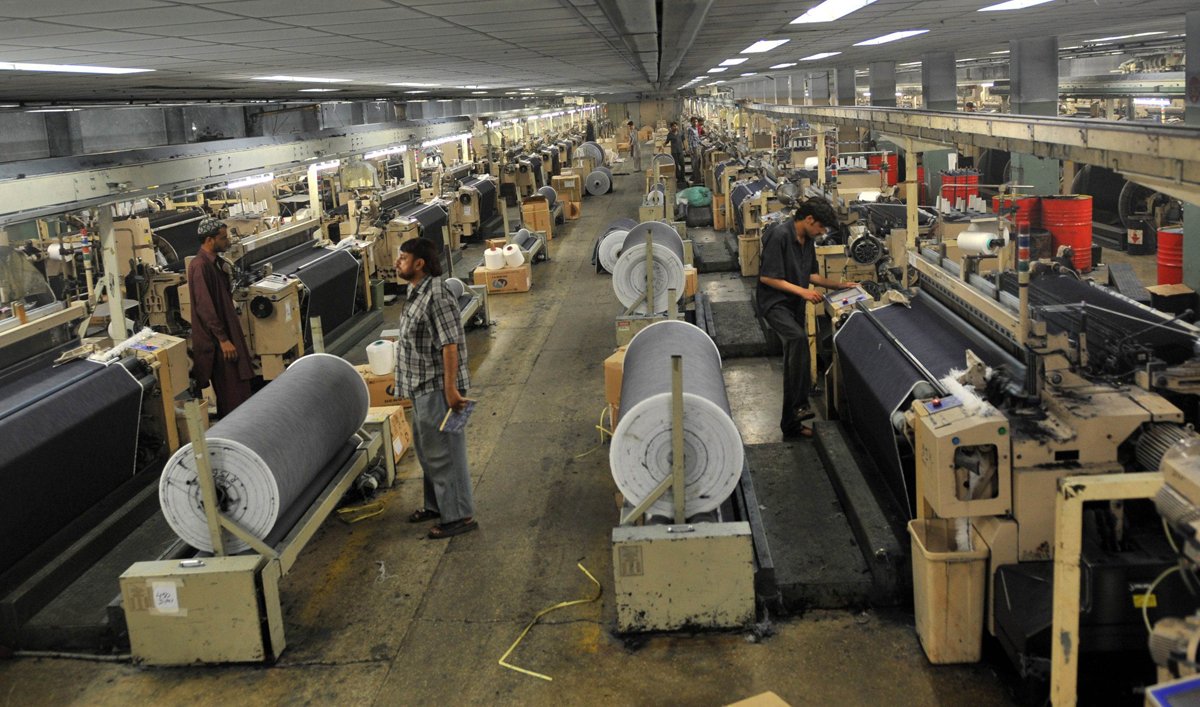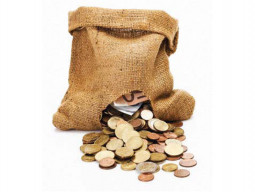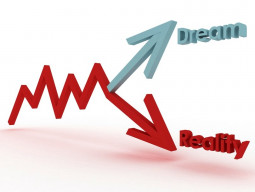
Pakistan’s true economic output is not reflected in the official gross domestic product (GDP) and this is the reason why.
It fails to include important industries that have sprung up since the last census of the manufacturing base was conducted nine years ago.
The State Bank of Pakistan (SBP) highlighted this anomaly in its annual report on The State of the Economy 2013-14, mentioning economic contributors not incorporated in the Large Scale Manufacturing (LSM) and agricultural data.
Manufacturing has a 11% share in economic output, but experts have been going on for years, saying that tens of thousands of establishments from Karachi to Faisalabad are the real drivers of the economy but remain unreported.

The last Census of Manufacturing Industries (CMI) was carried out by the Pakistan Bureau of Statistics (PBS) in fiscal 2005-06 on the basis of response received from 6,417 factories — a number much smaller than the actual size of the industrial base.
Some very large businesses are not covered by the PBS at all.
Engro Polymer and Chemicals, which meets over one-third of the domestic demand for caustic soda, is a glaring example.
Caustic soda holds the largest chunk in the 11 categories of chemicals reported by PBS. Excluding Engro distorts actual output of the industry, the SBP said.
While the production of caustic soda posted a 8.4% year-on-year decline in 2013, Engro Chemicals reported a 5.6% increase in production this year. “The inclusion of this company could have offset the reported decline in caustic soda,” SBP said.

When it comes to automobiles, PBS relies on data provided by the members of Pakistan Automotive Manufacturers Association (Pama). This leaves out leading bus and truck manufacturers like Afzal Motors and Al-Haj Faw Motors that entered the market later.
Textile and food
Similarly, the weightage of cotton yarn and cotton cloth is one of the highest in CMI, together holding 17%. Yet PBS leaves out 90% of the manufacturers as it covers only mill-related activity, which is based on units registered with the Ministry of Textiles.
As a matter of fact, data of wearing apparels and dressing, publishing, printing products and recorded media, fabricated metal products, computers, medical precision and optical instruments, and other industries, is not included as part of LSM, stated the SBP.

“In the food sector as well, demand and production of a number of processed food items like packaged milk, yogurt, dairy items, pastas cereals, has grown in past few years. But the production of these items is not included in LSM data,” it noted.

This basically leaves out manufacturers like Unilever, Kolson, Nestle, Engro Foods and National Foods, it noted.
The story is the same with cosmetics and personal care goods produced by FMCGs like Unilever and P&G that are also not part of the LSM.
Plastic sector
Another sector, which has emerged as an important contributor to the economy, and ignored in CMI, is plastics. The Pakistan Plastic Manufacturing Association (PPMA) has around 6,000 upstream and downstream units, employing 0.6 million people.
This sector is producing a broad range of products ranging from household items, industrial containers, medical and surgical items, auto parts, stationery items, PVC and pipes. Yet they are not covered in LSM.
Plastic sector has a weight of 0.75% in CMI while data is collected from only 142 units. As per PBS’ own numbers, in 2013-14, Pakistan exported 253, 896 tons of plastics products valued at $350.7 million, which was a 7% decrease compared with plastics exports in the previous year.
SBP also pointed out that while exports are down, imports of raw materials witnessed 26.4% growth in this year, which indicates robust growth in manufacturing in this segment.
The last CMI recorded 3,590 factories in Punjab, 1,825 in Sindh, 673 in Khyber-Pakhtunkhwa (K-P) and 212 in Balochistan.
At basic prices, textile sector had the highest contribution to GDP of 27.41%, food products and beverages 15.82%, chemicals and chemical products 14.83%, and non-metallic mineral products 7.52%.
A further breakdown shows that textile yarn and thread has a weight of 10.16% in the CMI while cotton fabrics, fertiliser and nitrogen and cement had 6.65%, 4.79% and 5.9% share, respectively.
Published in The Express Tribune, January 19th, 2015.
Like Business on Facebook, follow @TribuneBiz on Twitter to stay informed and join in the conversation.


































1714129906-0/Clint-Eastwood-(1)1714129906-0-270x192.webp)






COMMENTS
Comments are moderated and generally will be posted if they are on-topic and not abusive.
For more information, please see our Comments FAQ